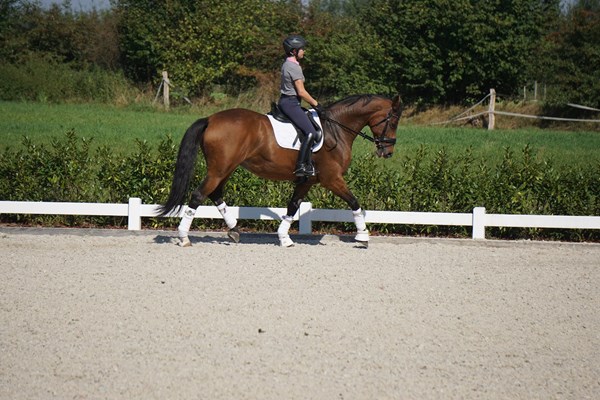
A friend asked me recently how she might improve her score for rider position, which was pretty much always a 7.0. I gave her some thoughts from my judge’s perspective. Then another person happened to ask me a similar question, how to improve her horse’s score for gaits above the usual 7.0.
As I was judging a three-day show last weekend, those two conversations popped back into my head. I noticed how often I sort of thought “eh” or “wow” when the horse was passing through the A end of the arena, all the way between the two corners.
The far end of the arena may be the most neglected part of a dressage test. For many riders, it’s more often where they prepare for something, rather than actually do something, or they might just to take a mini vacation before the next shoulder-in or half pass or lengthening down the long side. However, it’s also where the judge has the clearest view of the horse and rider in profile.
Many of the riders I see doing tests sort of trudge between those two corners. Others ride past A like they are really headed somewhere, and they make me sit up and take notice. If they’ve lost some of the freedom in their horse’s gait during a movement, they can at least re-establish it while passing A before the next movement starts. They probably make some effective half-halts, and there’s also maybe some shoulder-fore going on to straighten the horse. The hand might filter forward in a whispered request to the horse for more looseness through the topline.
The A end of the ring is also a good place for a rider to take brief inventory of her equitation. Maybe the reins should shorten and the hand soften, or the heels drop and the legs lengthen, or the seat should follow the horse’s back better and become more supple. If the rider is sitting balanced, tall and loose, not leaning too far forward or back, the A end of the ring is where it’s easiest for the judge to see.
I’m talking about when the horse and rider cover the entire 20 meters between the two corners at A. Any movement that turns toward or from the centerline at A will have only a couple of straight steps where the horse and rider are in profile. The next time you ride a test, it might be interesting to approach that straight area at A with more attention to rider position and to the horse’s freedom and see if that could carry forward to an additional .5 or even a whole point at the bottom of the test.











